
Thirteen projects win in 2018 Modernism in America Awards
By Justine Testado|
Tuesday, May 1, 2018
Related
Another edition of the Docomomo US Modernism in America Awards has come to a close! Today, the non-profit group announced 13 winners of the 2018 awards competition, which distinguished outstanding restoration projects that demonstrate high levels of design expertise and commitment to historic preservation. Winners are also acknowledged for their grassroots efforts and public and private partnerships.
Projects including Frank Lloyd Wright's Unity Temple, the General Motors Design Dome and Auditorium, Nathan Eddy's “Starship Chicago” film, and more. Five other projects also received Citations of Merit. The winning teams will be presented with their awards during Design Within Reach in New York City on June 20.
Scroll down to see the winning projects.
AWARDS OF EXCELLENCE
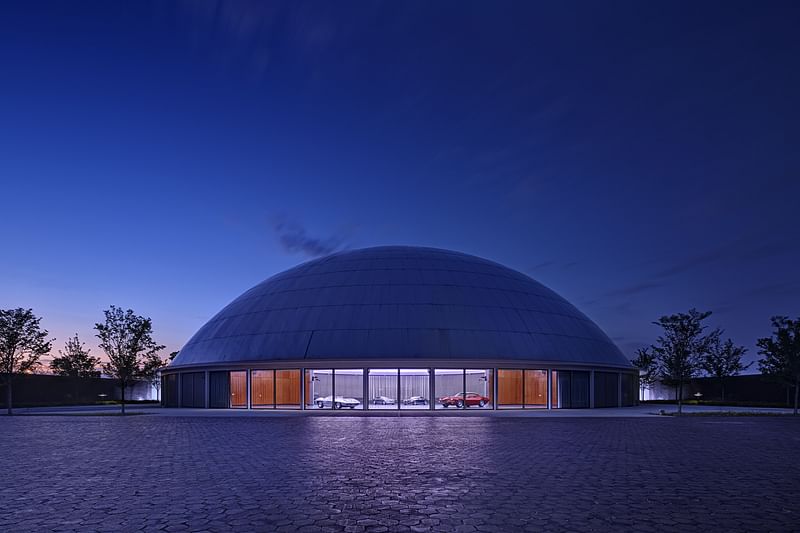
Commercial Design Award of Excellence:
General Motors Design Dome and Auditorium
Location: Warren, MI
Original Architect: Harley Earl and Eero Saarinen
Restoration Team: Paul Urbanek, FAIA, NCARB, LEED AP, Wayne Bills, AIA, LEED AP, Terry Guitar, AIA, LEED AP, Rodrigo Manriquez, IALD, LC, IES, Leland Curtis, LC, Lori James, IIDA, NCIDQ, LEED AP ID+C, Ed Pfannes, PE, Dom Pastore, PE, LEED AP, Mark Goyette, Gerard Gutierrez, Matt Seeley, Ryan Dashkevicz
Client: General Motors, LLC
Project description: “Designed by the world-renowned architect Eero Saarinen and Harley Earl in 1956, both Saarinen and Earl worked closely with the styling team and placed special attention on the spaces concerned with designing, prototyping, and evaluating new automobiles. The 180-foot diameter Dome has become an iconic piece of automotive design and one that organizations from around the world have prototyped for facilities of their own. General Motors initiated the renovation with the design team at SmithGroupJJR, which looked to enhance the Design Auditorium as an evaluation and presentation center for critiquing and displaying the next generation of automotive product design. The overall design intent was not just to modernize the facility but to do so in a manner consistent with the original detailing while implementing sustainable solutions to lower energy and maintenance costs.”
Jury comments:
Susan Rademacher: “This is the perfect example of how to treat an icon.”
Eric Keune: “The renovation demonstrates the great care that was given to the original design team’s vision, while simultaneously bringing the spirit forward with a gentle guiding hand and using contemporary technology. It is noteworthy and commendable that General Motors was willing to invest and upgrade the building for the same use even though the company has continued to transform themselves over time.”

Commercial Design Award of Excellence: Lenox Health Greenwich Village
Location: New York, NY
Original Architect: Albert C. Ledner
Restoration Team: Northwell Health, Perkins Eastman, CANY, Turner Construction, BR+A, Silman, Cerami & Associates, Russell Design, Sam Schwartz, VDA, Langan Engineering, Louis Sgroe Equipment Planning
Client: Northwell Health
Project description: “The restored Lenox Health Greenwich Village was formerly known as the Joseph Curran Building and the O’Toole Medical Services Building, in New York City. Designed by Albert C. Ledner in 1964, the building, which served as the National Maritime Union headquarters, was bold in its appropriate ship-like design, in its deference to circular forms (illustrating fairness and equality), and in its stark contrast with the more historic architecture that typifies Greenwich Village. In 1973, the building was purchased by St. Vincent Catholic Medical Centers and became the Edward & Theresa O’Toole Medical Services building. After St. Vincent closed their doors, a herculean effort was made by preservation advocates to save the building, resulting in the commitment of the new owners, Northwell Health. The design team, led by Perkins Eastman, painstakingly restored and adapted the historically significant building within a landmarked district to capture the original design vision, while creating a leading-edge medical facility—the first of its kind in Manhattan.”
Jury comment: “This beautiful and unique building is an incredible piece of urban architecture whose restoration respectfully honors the building’s original concept while creatively adapting a dramatic structure to a new purpose. This project offers clients and cities alike valuable lessons about the transformative impacts of architecture and design; specifically, the often-surprising elasticity which waits patiently, and at times unexpectedly, in certain works of modern architecture.”

Civic/Institutional Design Award of Excellence: Hill College House Renovation
Location: Philadelphia, PA
Original Architect: Eero Saarinen and Dan Kiley (landscapes)
Restoration Team: Mills + Schnoering Architects, LLC (Architecture), INTECH Construction, Inc. (Construction Management), AHA (MEP/FP Engineering), Becker & Frondorf (Estimating), Edwards & Company (Envelope Consulting), Floss Barber Inc. (Interior Design), Keast & Hood (Structural Engineering), Keystone Preservation Group (Materials Conservation), The Lighting Practice (Lighting Design), Metropolitan Acoustics (A/V and Acoustic Design), OLIN (Landscape Design), Pennoni (Civil Engineering), Ricca Design Studios (Food Service Consulting), Shen Milsom Wilke (Security), Zipf Associates (Elevator Consulting)
Client: University of Pennsylvania
Project description: “Located on the University of Pennsylvania’s campus, the was designed by Eero Saarinen with landscapes by Dan Kiley in 1960. Saarinen grounded his design for the five-story, 195,000-square-foot brick residence in the idea of a self-sufficient village; it was the first purpose-built women’s dormitory at Penn. No major renovation had been performed at Hill College House since it was built, and although the architecture continued to foster a strong sense of community, dated systems and finishes needed updating. Penn wanted to bring the residence up to 21st century standards while retaining its unique features, and the design team’s collaborative approach involved conservation, laboratory materials analyses, and archival research to understand Saarinen’s original details and appropriate contemporary replacements or complements. After undergoing a 15-month, LEED Gold certified comprehensive renovation, the landmark reopened to 500 student residents in August 2017.”
Jury comment: “This project highlights the commitment to restore a beautiful but overlooked campus structure and honors the lasting values found in modern architecture. The work accomplished by the design team not only respects the original vision, but also addresses the needs of students today, improving functionality and gaining a LEED certification – Saarinen for the 21st century.”
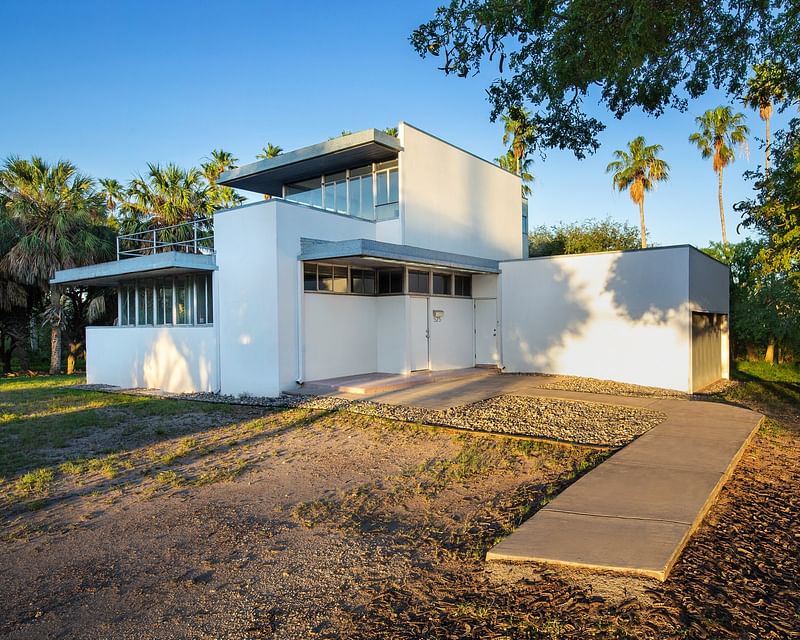
Residential Design Award of Excellence: George Kraigher House
Location: Brownsville, TX
Original Architect: Richard Neutra
Restoration Team: Lawrence V. Lof (Project Lead), Texas Southmost College
Client: City of Brownsville and Texas Southmost College – Dr. Juliet V. García, president, and Dr. José G. Martín, provost
Project description: “Designed and built for Pan American pilot George Kraigher in 1937, the house is the only single-family home in Texas designed by Richard Neutra and the first International Style house built in the state. Threatened by neglect, fire, vandalism, and water penetration, the Kraigher House was the focus of nearly two decades of preservation efforts. Beginning in 2005, a unique partnership of community activists, city officials and, the University of Texas, Brownsville/Texas Southmost College came together to secure and restore the house. Instead of a team of architects and consultants, the restoration team was led by University professor and rehabilitation projects manager Lawrence V. Lof and assisted by his students. A Historic Rehabilitation Practicum evolved from this work and now provides students in the Industrial Technology Department hands-on experience with historic restoration construction.”
Jury comment: “Restoration of the Kraigher House is a compelling story of the power of public and private partnerships. Beginning with the grassroots advocacy efforts of Ambrosio Villarreal, to the Kraigher House's inclusion on Preservation Texas’ and the National Trust for Historic Preservation's endangered lists, restoration of this rare and significant Neutra residence by the Brownsville community is a strong testament to the power of partnerships.”
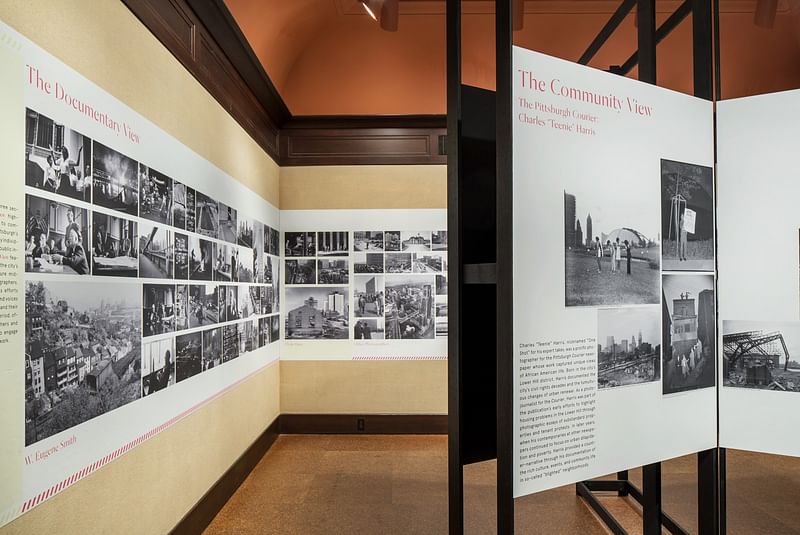
Survey/Inventory Award of Excellence: Imagining the Modern: The Architecture and Urbanism of Postwar Pittsburgh Location: Pittsburgh, PA
Project Team: Chris Grimley, Michael Kubo, and Rami el Samahy with Ann Lui, Mark Pasnik, Cameron Longyear, Shannon McLean, Brett Pierson, Andrew Potter, Rebecca Rice, Valny Aoalsteindottir, Silvia Colpani, Lindsay Dumont, and Victoria Pai - over,under (Architects-in-Residence), Martin Aurand – Carnegie Mellon University (Curatorial Consultant), Raymund Ryan (Heinz Architectural Center Curator), Alyssum Skjeie (Heinz Architectural Center Program Manager)
Client: Heinz Architectural Center, Carnegie Museum of Art, Pittsburgh
Project description: “In 2015, the architecture and design firm over,under was selected by the Carnegie Museum of Art’s Heinz Architectural Center to design the inaugural exhibition of a new initiative known as HAC Lab. The firm curated, designed, fabricated, and installed a nine-month exhibition with a series of programmed events and broadsheet publications (the results of this effort are currently being transformed into a book, to be published by the Monacelli Press in 2019). Imagining the Modern sought to untangle Pittsburgh’s complicated relationship with modern architecture and planning and addressed both positive and negative impacts of the era by examining what took place during the city's urban renewal era, what was gained and lost, and what these histories might suggest for the city's future.”
Jury comment: “This comprehensive and multi-dimensional project established a broad context to understand a cross section of modernism through multiple lenses in the context of a single city. The project team is recognized for this deeply researched and beautifully presented exhibition that encouraged participants to take a fresh look at the architecture and urbanism of postwar Pittsburgh.”
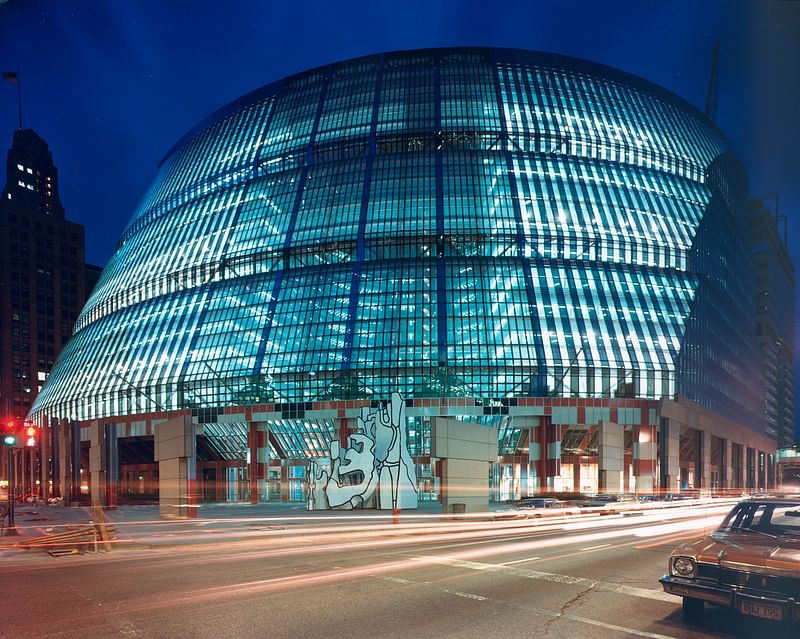
Advocacy Award of Excellence: Starship Chicago: A Film by Nathan Eddy
Location: Chicago, IL
Project Team: Nathan Eddy (Director)
Project descriptiion: “The 16-minute short film proactively seeks to bring attention to the controversial and threatened 1985 James R. Thompson Center designed by Helmet Jahn. In the film, Eddy chronicles the significance of the building and its contributions to the architectural history of Chicago by layering provocative interviews with key stakeholders including Helmut Jahn, Stanley Tigerman, preservation professionals and architectural critics with dramatic panoramic cinematography that flies and often floats over the design.”
Docomomo US Board of Directors comment: “When most preservation efforts are reactionary, Nathan Eddy has taken a unique and proactive approach and sparked much needed conversation and action before a building faces demolition. Starship Chicago is thoughtful, beautiful, informative, and engaging and brings to light what a powerful medium film can be.”

Advocacy Award of Excellence: Tom Little: Georgia Advocacy
Location: Atlanta, GA
Project description: “Tom Little, the long-standing Docomomo US/Georgia chapter president, quietly and persistently advocated for modern buildings in Georgia including the Constitution Building and the round Sun Trust Plaza branch bank building, which was recently added to the National Register of Historic Places after its near demolition for a mini-storage facility. Tom sought to raise public awareness of the significance of the Atlanta Fulton County Central Library, designed by Marcel Breuer and completed in 1980.”
Docomomo US Board of Directors comment: “As a result of Tom’s dedication and advocacy, he has been instrumental in saving a number of significant buildings in the region. As the founding president of the Georgia chapter of Docomomo US, Tom continues to be a steadfast advocate for modern buildings and we acknowledge his dedication in sharing the organization's mission through local leadership and advocacy.”

Special Award of Restoration Excellence: Unity Temple
Location: Oak Park, IL
Original Architect: Frank Lloyd Wright
Restoration Team: Harboe Architects, PC (Restoration Architects), Project Management Advisors, Inc. (Project Management), Berglund Construction Company (Contractor)
Client: UTP, LLC
Project description: “Originally completed in 1908, Unity Temple is one of Frank Lloyd Wright’s greatest works. It is a National Historic Landmark and is included as one of the ten Key Works of Modern Architecture by Frank Lloyd Wright nominated to the World Heritage list. His concept for the building was to create a space for both the sacred and secular which resulted in two separate masses, Unity Temple and Unity House, connected by a lower foyer. As with many religious structures, the building suffered from decades of deferred maintenance. Its plight was recognized by being included on Landmarks Illinois’ 2000 Most Endangered list and as one of the National Trust for Historic Preservation’s 2009 America’s Most Endangered Places. Unity Temple Restoration Foundation commissioned a Preservation Master Plan to outline the work that needed to be done in 2006. In 2013, the Alphawood Foundation pledged a $10M lead gift towards the restoration and the project was begun. Harboe Architects, PC spent nearly a year conducting in-depth research and physical trial mock ups to determine the best ways to authentically restore and fully modernize this international treasure. Completed in 2017, construction took over two years and involved all aspects of the building. The restoration of Unity Temple not only returns this internationally significant work of architecture to its original appearance but gives new life to a building that will allow it to continue to successfully serve its original purpose as a house of worship for its congregation as well as a tourist destination for Frank Lloyd Wright enthusiasts from all over the world.
On behalf of the jury, architect Eric Keune commented: “This is a comprehensive restoration of one of the canonical and pioneering works of American modern architecture. It allows future generations to not only use, but learn from, and see this building as it was originally designed by Wright.”
CITATIONS OF MERIT
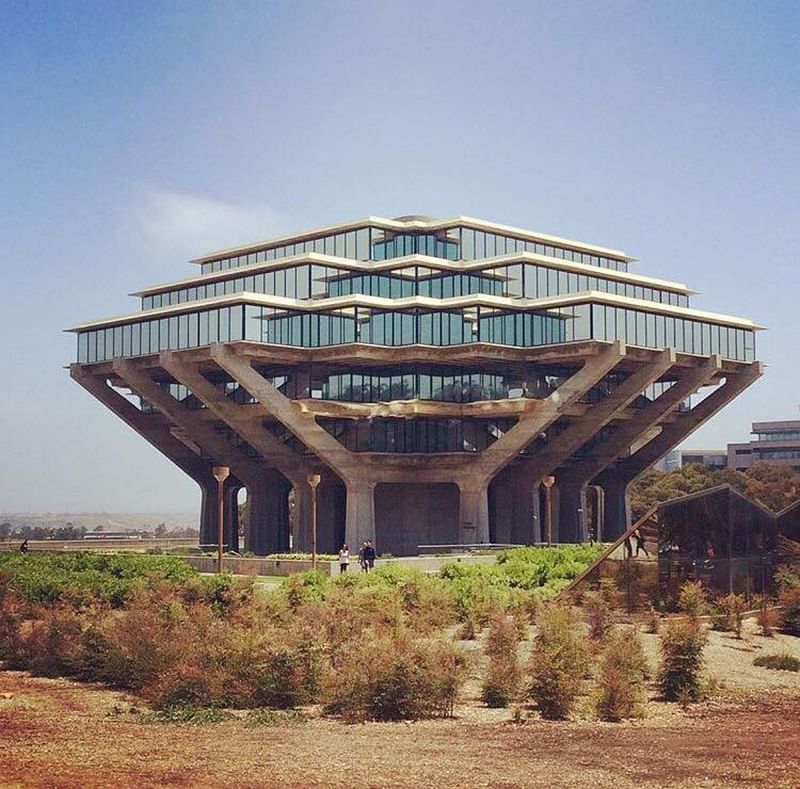
UC San Diego Campus-wide Historic Context Statement and Historic Resource Survey
Location: San Diego, CA
Project Team: Architectural Resources Group – Katie E. Horak, Principal, Andrew Goodrich, Associate, Micaela Torres-Gill, Paul D. Turner, PhD, NeuCampus Planning – David Neuman UC San Diego, Physical and Community Planning - Robert Clossin (AICP, Director), Catherine Presmyk (Assistant Director of Environmental Planning), Todd Pitman (Assistant Director and Campus Landscape Architect), Elyse Sanchez (Associate Planner)
Client: UC San Diego
Project description: “Between 2015 and 2017, Architectural Resources Group worked closely with UC San Diego’s campus planners to identify, inventory, document, and develop policies to preserve its wealth of modern resources. The campus’ early buildings were designed by some of the most renowned figures in Los Angeles and San Diego Modernism at the time: William Pereira, A. Quincy Jones, Robert Mosher, and Lloyd Ruocco, and what resulted was a collection of buildings and landscapes were remarkably bold, and collectively stand as a showcase of Modernism in all of its forms. Ruocco’s Post‐and‐Beam style laboratory at Scripps (1963); Pereira’s imposing, Brutalist style Geisel Library (1970), and the collection of Brutalist style buildings comprising Muir College (1967‐1971) are celebrated as some of San Diego’s very best examples of their respective Modern architectural styles. For years, UC San Diego’s rich architectural history was well known but not well documented. The historic context statement and survey provide a level of nuance and detail that was not there before and generated an official inventory of historically and culturally significant sites on campus that will help guide future development in a manner that is sensitive to, and cognizant of, the campus’s historic character.”
Jury comment: “This project is significant because of the ever-increasing pressures universities face in improving their campus building portfolios while maintaining significant architectural resources. The inventory will help better protect these resources and has the potential to educate this particular campus community and other college and university systems across the country.”

115, Geotronics Labs Building
Location: Dallas, TX
Original Architect: Printz and Brooks
Restoration team: DSGN Associates (Architecture), Constructive – Rick Fontenot
Project description: “Designed by the noted architectural firm of Prinz and Brooks in 1962 for a geosciences company, Geotronic Labs, Inc. was the sole occupant of the building until 2003 and it then sat vacant for the next eleven years until 2014, when it was acquired and renovated by the architectural firm DSGN Associates for its own offices.”
On behalf of the jury, Lizabeth Cohen stated: “It is important to call attention to a project that takes a typical, small company office building and revitalizes it as an example to others who may embark upon similar projects.” Jury member Meredith Bzdak added, “This is a well-executed restoration and a good model for the treatment of other modest mid-century buildings like this around the country.”
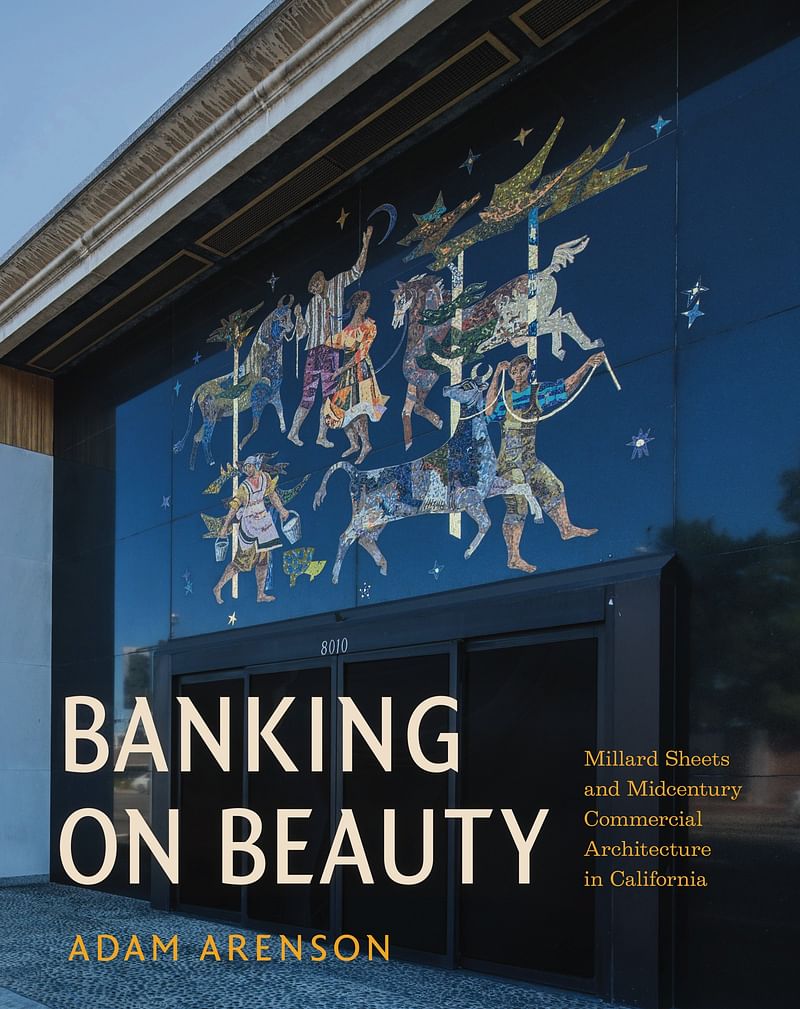
Banking on Beauty: Millard Sheets and Midcentury Commercial Architecture
Location: California
Project Team: Adam Arenson
Project description: “Adam Arenson received a Citation of Merit for his research, inventory, and subsequent book titled ‘Banking on Beauty’, documenting the art and architecture of Millard Sheets. The Millard Sheets Studio is responsible for creating more than two hundred works of commercial art and architecture in California and across the country. Arenson was driven to document the work of Sheets in 2009 after reading a Millard Sheets mural had been painted over in a former Home Savings and Loan Branch. His body of research illuminates the history of corporate sponsorship of art and architecture in small commercial buildings, something that is often overlooked.”
Jury comment: “Arenson’s research has uncovered an extensive legacy of “every man modernism” that was largely unknown and underappreciated, and brings attention to main street architecture with real design value and the impact of individual grassroots efforts.”

George Washington Bridge Bus Station
Location: New York, NY
Original Architect: Dr. Pier Luigi Nervi
Restoration team: The Port Authority of NY & NJ – Engineering Department, Architectural Unit, STV, Inc.
Client: The Port Authority of NY & NJ
Project description: “One of two buildings in the United States designed by Dr. Pier Luigi Nervi, the George Washington Bridge Bus Station opened in 1963 in conjunction with the lower level of the George Washington Bridge and the Trans-Manhattan Expressway. The facility’s architectural expression is a tour-de-force that incorporates concrete trusses and a unique butterfly-like roofscape above the West Building. After suffering from a certain degree of benign neglect, the building was identified in an Authority-wide study as a prime opportunity for revenue enhancement. In 2008, the Port Authority of NY & NJ selected a developer and STV, Inc. as the restoration architects. Although the GWB Bus Station is not a designated landmark, it was treated as such, and conceptual efforts were shared with the New York State Historic Preservation Office and the New York City Landmarks Preservation Commission. Great attention was paid to developing a ‘modern intervention’ that is respectful of the historic structure, and in fact celebrates the structure, by its sensitive incorporation into the new program.”
Jury comment: “As bus stations continue to be lynchpins of modern urban transportation infrastructure, the restoration of the GWB Bus Station was thoughtfully executed and serves as an important example of a government agency choosing to invest in the restoration of a significant modern resource instead of opting for new construction.”
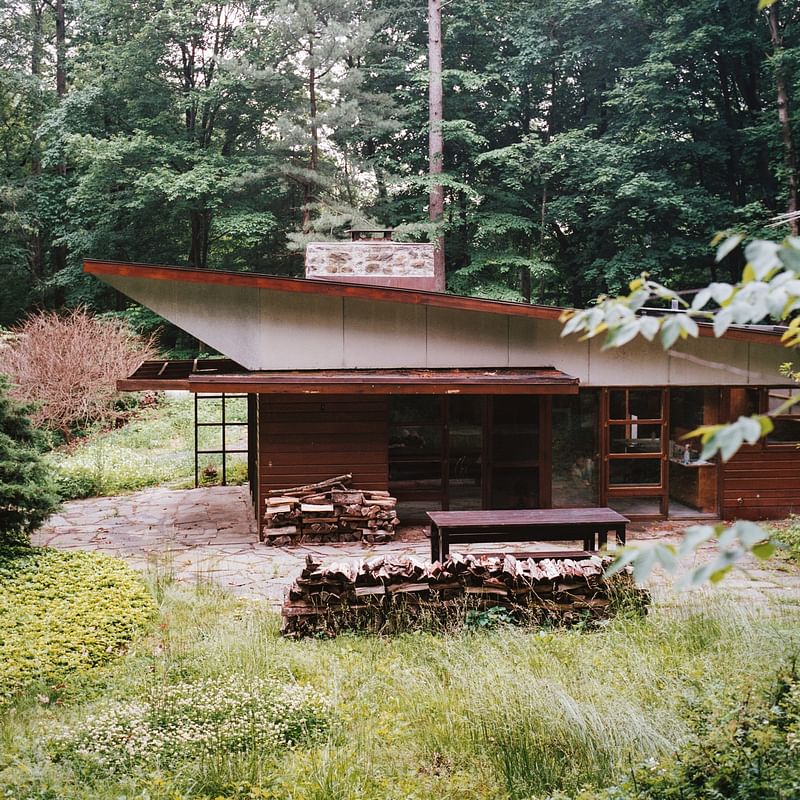
Lurie House
Location: Pleasantville, NY
Original Architect: Kaneji Domoto
Restoration team: Lynnette Widder (Lead), Evita Yumul, Transsolar – Erik Olsen, Yaron Pardo, Rockall Construction, 475 Building Supply – Floris Buisman
Project description: “Designed in 1949, it is one of five houses completed by Domoto in Usonia, a suburb in Westchester, New York. The Lurie House was part of Domoto’s experimentation with ‘Japanese’ motifs couched in low-cost construction, landscape design and environmental responsiveness. Architect Lynette Widder and her team worked to sensitively restore the original building materials while finding creative solutions that brought the house’s heating and mechanical systems up to date but minimally impacted the original design.
Jury comment: “This is a beautiful and well-considered renovation done with extreme care and appreciation of environmental efforts as well as the Japanese-American architect’s cultural orientation.”

RELATED NEWS Nine historic midcentury buildings recognized in 2017 Modernism in America Awards

RELATED NEWS 2016 Modernism in America Awards winners exemplify the lasting impact of historic preservation


Share
0 Comments
Comment as :